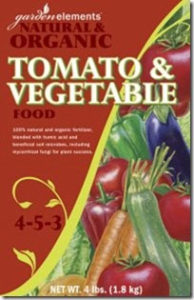
ENJOY the Flavorful Freshness of Homegrown
Gourmet Vegetables and Herbs!
Add a little zest to your next culinary creation with herbs picked fresh from your own garden. Or create a naturally delicious side dish of sun ripened vegetables that you have grown yourself. There is nothing more gratifying than enjoying the naturally fresh flavor of homegrown cooking. The SAFEST way to eat, GROW YOUR OWN !
 As you plan your garden for this year, keep in mind that using the same layout year after year is not going to result in the best yield for your crops. Certain plants need certain nutrients from the soil to thrive and once depleted, they will not grow as effectively. Rotating crops allows the soil to remain nutrient rich.
As you plan your garden for this year, keep in mind that using the same layout year after year is not going to result in the best yield for your crops. Certain plants need certain nutrients from the soil to thrive and once depleted, they will not grow as effectively. Rotating crops allows the soil to remain nutrient rich.
If you are planning on growing a wide variety of plants, divide your bed into 4 areas and plant as follows:
- Tomatoes, peppers, eggplant — they like lots of nitrogen and compost, so good soil preparation before planting is essential.
- Peas, beans, parsley, dill, coriander— they actually thrive in nutrient poor soil, and in fact, add nitrogen to the soil, resulting in a natural way to fix poor soil.
- Cabbage, broccoli, cauliflower, brussel sprouts, collards, kohlrabi, squash, pumpkins, melons, cucumbers — this area will need lots of space so you might want to use a trellis for the squash and cucumbers to make space for the other plants. These plants are heavy feeders so amend the soil with compost and nitrogen before planting.
- Corn — this plant needs LOTS of space because it pollinates via wind. Corn is also a big user of water and food so amend the soil before planting.
Rotate these four areas each year, moving number 1 to 2, 2 to 3, 3 to 4 and 4 to 1, etc. This will allow for the best success in your gardening experience.
Good Luck!
Some varieties of herbs and vegetables are natural companions and help each other in the garden. For instance, Native Americans learned early that planting corn, pole beans and squash together resulted in great success. This trio was known as "The Three Sisters". Each plant helped the other two in its' own way: The corn plant was tall and sturdy enough for the beans to climb on and grow; the beans fixed nitrogen into the surrounding soil for the other plants and the squash shaded the ground, keeping in vital moisture. Check the following link to Companion Plants for some ideas: https://hgplants.com/wp-content/uploads/Companion_Plants.pdf
We offer a large selection of ALL types of vegetables and herbs; follow these links to the most popular types or come into the store to experience the sights and smells yourself !
LINK TO AVAILABLE TOMATO VARIETIES: https://hgplants.com/?wpsc_product_category=tomatoes
LINK TO AVAILABLE PEPPER VARIETIES: https://hgplants.com/?wpsc_product_category=peppers
LINK TO AVAILABLE HERB VARIETIES: https://hgplants.com/?wpsc_product_category=herbs
LINK TO AVAILABLE HEIRLOOM VARIETIES: https://hgplants.com/?wpsc_product_category=heirloom-varieties

